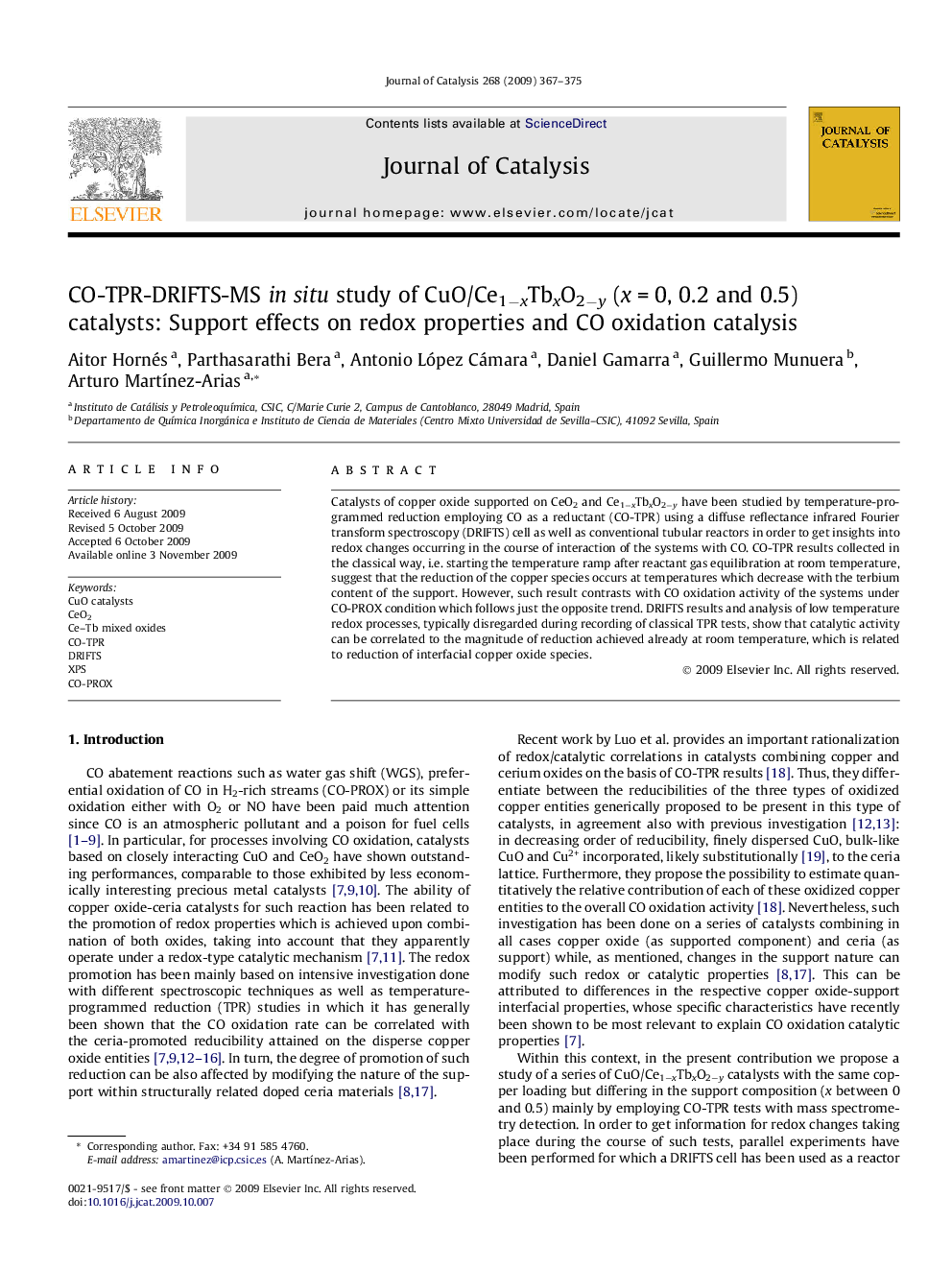| Article ID | Journal | Published Year | Pages | File Type |
|---|---|---|---|---|
| 61979 | Journal of Catalysis | 2009 | 9 Pages |
Catalysts of copper oxide supported on CeO2 and Ce1−xTbxO2−y have been studied by temperature-programmed reduction employing CO as a reductant (CO-TPR) using a diffuse reflectance infrared Fourier transform spectroscopy (DRIFTS) cell as well as conventional tubular reactors in order to get insights into redox changes occurring in the course of interaction of the systems with CO. CO-TPR results collected in the classical way, i.e. starting the temperature ramp after reactant gas equilibration at room temperature, suggest that the reduction of the copper species occurs at temperatures which decrease with the terbium content of the support. However, such result contrasts with CO oxidation activity of the systems under CO-PROX condition which follows just the opposite trend. DRIFTS results and analysis of low temperature redox processes, typically disregarded during recording of classical TPR tests, show that catalytic activity can be correlated to the magnitude of reduction achieved already at room temperature, which is related to reduction of interfacial copper oxide species.
Graphical abstractReasons for the discrepancies between redox and catalytic properties on the basis of classical CO temperature-programmed reduction tests starting at room temperature are explored in Ce1−xTbxO2−y-supported copper catalysts by in situ infrared.Figure optionsDownload full-size imageDownload high-quality image (101 K)Download as PowerPoint slide
